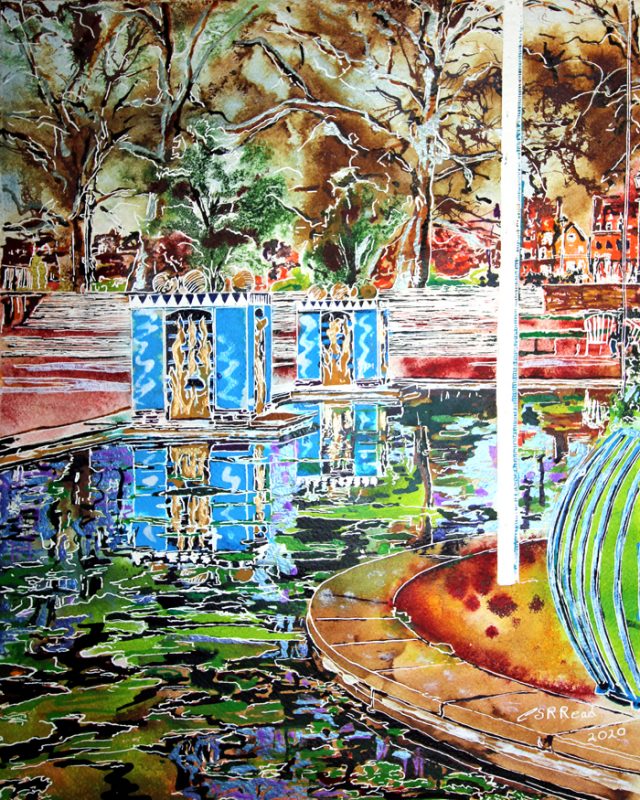Man and nature are sadly often at loggerheads but that is not the whole affair. During both the First and Second World Wars allotments were tended in Battersea Park to grow much needed fruit and vegetables. After the Second World War the Festival Pleasure Gardens were created in Battersea Park for the Festival of Britain.
In the Battersea Park painting, nature asserts firm control.
The formal Battersea Park garden layout displays the geometry and symmetry popular at the time. But Mother Nature was not daunted. She bided her time. As with all man-made structures, and gardens in particular, Mother Nature will have her way. Angles soften as mosses grow unevenly over hard surfaces.
Growing tree branches stick out every which way and pesky winds churn up the pool’s mirrored surface and wreak havoc on the balanced shape of objects. And then those lilies that grow leaves every which way.
Desire for symmetry
The flame-like features on sculptures on the pond hint at the designer’s desire for more symmetry. But that is it!
The scene is simple, but rich in colour. Hues that range from pure white, to the darkest of dark greens and blues calling you to their depth. What can you see in those depths? Are there fish? Dark waters are where the fish hide when predators are about. This water is not just dark though. The jewel tones of the two box sculptures are drawn downwards, as the dark pool grasps at stealing their colour like melting turquoise ice cubes. Other blues catch your eye. Similar but different. They seem to call for your attention as you spot them. The reflections of a blue sky, which has gone a little beyond. Blue? Yes. But this is a blue of a slightly menacing sky. The rains have passed but the heavens have not forgotten the recent downpour.
The Battersea Park seems to rest in a balance between nature softening the imprint of human design.

